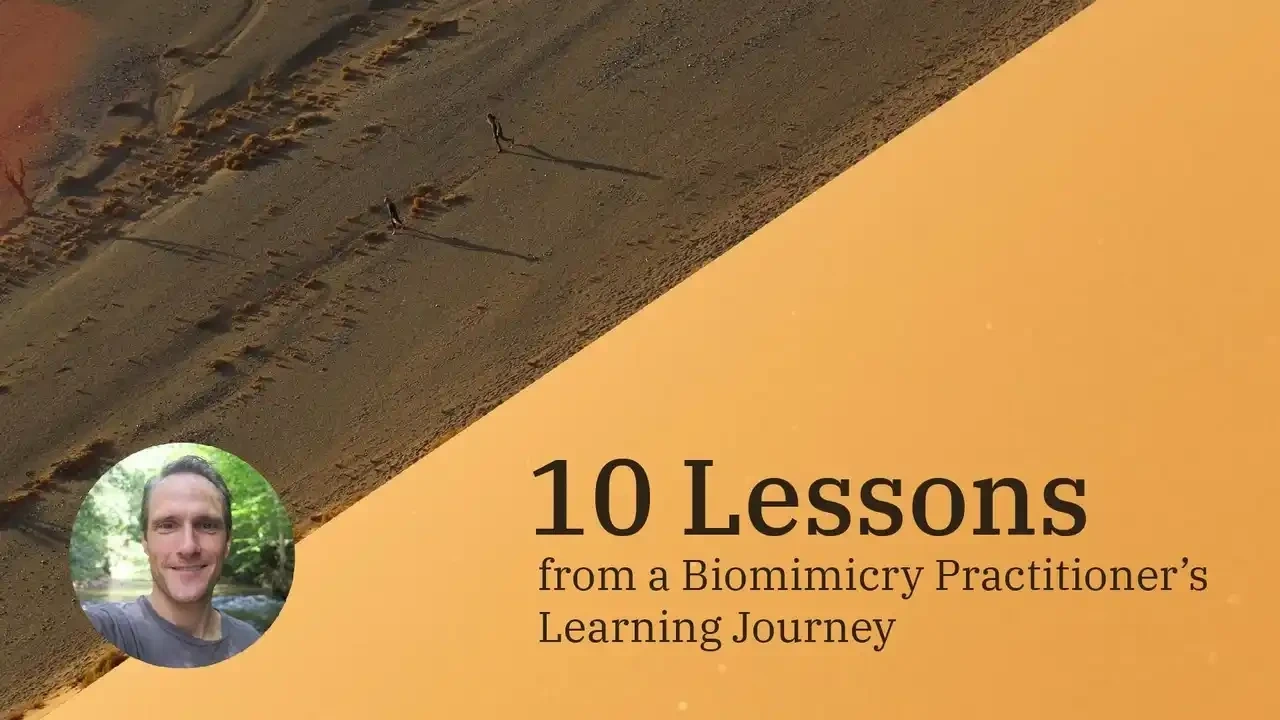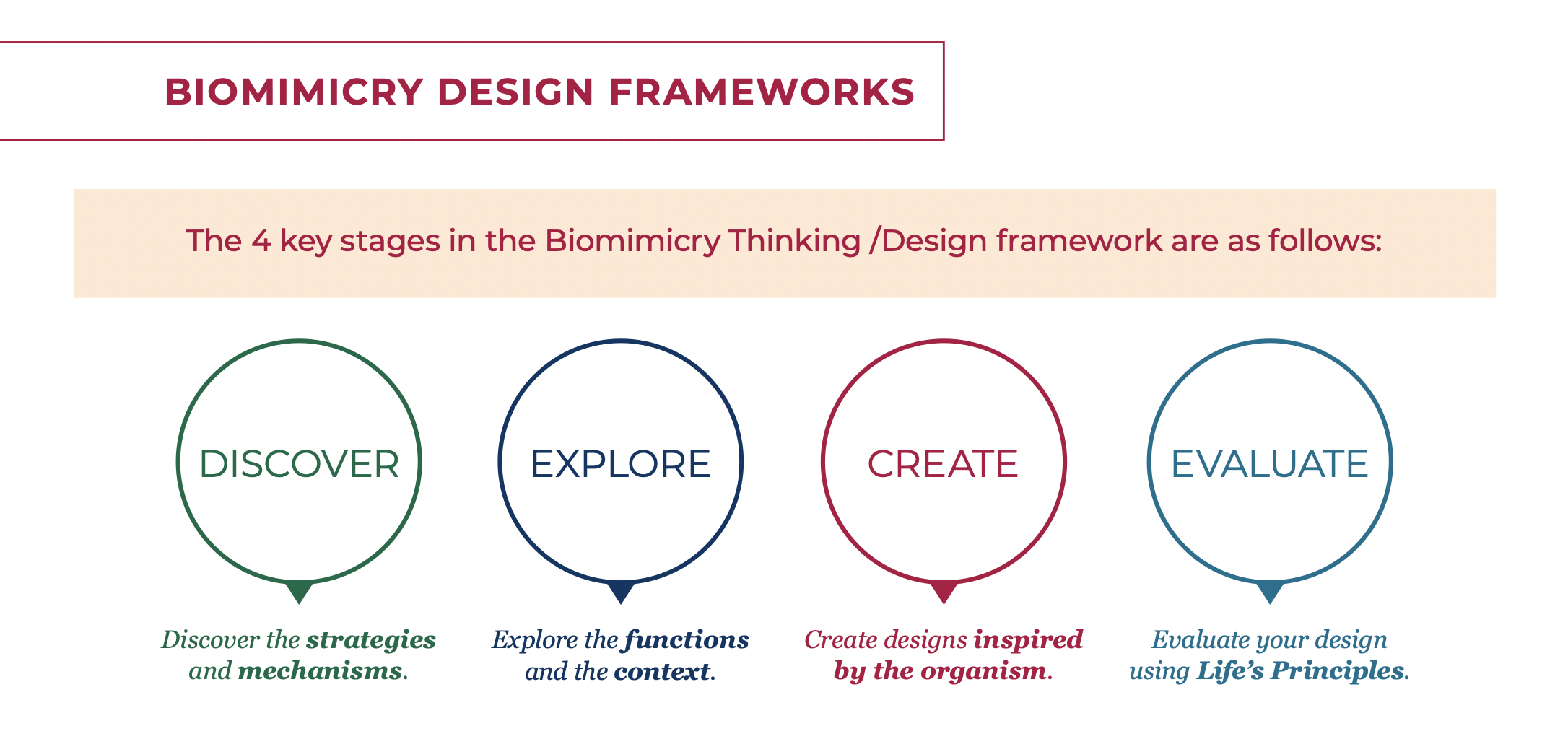10 Lessons from a Biomimicry Practitioner's Learning Journey 📚

For 20 years I’ve driven environmental and social impact at iconic organizations including National Geographic Society, The Nature Conservancy and United Way. A few years ago I began to question the efficacy of conventional conservation. One day when talking with a colleague we wondered what it would take to create a world that doesn’t need conserving. Wouldn’t it be amazing if the word “conservation” became as outdated as the word “suffragette”? 100 years ago in the US, that word was a rallying cry for women as they fought for and then secured the legal right to vote. And now that word sits on a linguistic shelf collecting dust.
What if we created a better future where the products we buy and the services we use are designed in ways that are planet positive? How might we create a thriving world where conservation is no longer needed?
This line of inquiry began a journey that introduced me to biomimicry and the opportunity to create products and services inspired by nature that balance the needs of people and planet.
Biomimicry Basics
There are several great books about biomimicry but I needed something more structured. Eventually, I found and enrolled in a self-paced course from Learn Biomimicry. Naturally, the more I learned, the more I wanted to learn so I levelled up and joined their Biomimicry Practitioner Program. This program is a mentored and cohort-based 6-month experience that goes deeper on applying biomimicry thinking to a design challenge.
Getting Started with the Biomimicry Practitioner Program
You are expected to bring a design challenge to the practitioner program. This boosts your learning because you’re applying the concepts to a self-driven challenge rather than being handed an abstract challenge or case. I’ve been through other experiences where the learning is very prescriptive based on pre-existing examples and I’ve always struggled to actually learn in those contexts. The Learn Biomimicry team works with you to refine your design challenge before the program starts to ensure you are in the best possible position for a successful learning experience.
Getting Started
The program follows a method that will feel familiar to practitioners of Design Thinking or other creative problem-solving methods.

Step 1 — Scoping
Once you have a viable design challenge, you’ll begin the biomimicry thinking process by using the biomimicry taxonomy to identify functions which help you translate your design challenge to nature. For example, if your design challenge is focused on making running more comfortable when it’s hot and humid outside then the taxonomy can guide you to a range of functions such as “how does nature: maintain homeostasis; move liquids/gasses; dissipate heat”. You’ll also identify any constraints or guardrails for your idea. And you’ll begin the process of integrating Life’s Principles which nudge your thinking towards the direction of solutions that are grounded in sustainable and enduring options.
Step 2 — Discovery
Moving on from scoping, the Learn Biomimicry team guides you through a discovery phase where you’ll turn to nature to discover species that match your functions. It’s a dizzying experience that for me was highly iterative. I learned that my initial thinking and list of functions weren’t quite right and as I turned to nature and looked at the clues in front of me I needed to pivot in a different direction.
Discovery is an intense part of the overall process and surfaces lots of species plus the strategies and specific mechanisms they’ve developed to deliver the functions you’ve identified. Roll up your sleeves, there’s a lot of work to be done and it all leads to abstracting your research into several design principles — succinct statements that translate biology into natural language. I struggled with translating my discovery research into design principles. The Learn Biomimicry team was super helpful at coaching me in ways that got me unstuck AND that helped spark my thinking about the create stage. They want you to learn and succeed and are generous with their input.
Step 3 — Create
With sufficient research and a list of design principles at your disposal, now it’s time to create! This stage is very open-ended and in my case involved a lot of diagraming, doodling, sleuthing, mind mapping and head-scratching. I’m very happy with the end result and surprised by how different it is from where I started.
Step 4 — Evaluate
The last part of the program involves evaluating your idea against Life’s Principles as a check to ensure your idea is aligned with these guideposts. You’re encouraged to go a step further and imagine what your idea might look like if ALL Life’s Principles were included. Then all your work is aggregated into a final presentation to summarize what you created, the functions, mechanisms, strategies, species, and design principles that shaped the idea and where it might go next.
Reflection on the Biomimicry Practitioner Program
The Biomimicry Practitioner Program was an incredible experience for me. It’s a smart investment if you are interested in biomimicry and ready to apply what you’re learning in a tangible way. Some reflections on what made the experience so rewarding:
-
Identify a meaningful design challenge
In my case, I focused on how to make running more comfortable in hot and humid weather. This worked well because I was concurrently training for a 50-mile ultramarathon which meant I’d be doing a lot of long runs during the miserably hot and humid summers in Washington, D.C. My training was basically R&D for this program.
-
Trust the process
Try to withhold any solutions that come to mind in the early stages of this program and instead remain open to the process which points you in the right direction at each step. The process felt like wayfinding through complexity using a compass and a map rather than having precise GPS-based turn-by-turn directions and for that reason was a richer experience.
-
Start with the end in mind
If you want to make something that’s more sustainable then test your thinking against Life’s Principles at the earliest point. And test periodically at key moments. Also, have a clear goal for yourself of what success looks like. My main goal was to learn more about the biomimicry process (success!) with a stretch goal of developing an idea that has the potential to go further (maybe?). -
Don’t get too attached to your ideas
Core to the ethos of biomimicry is the need to quiet your own cleverness. It’s easy to assume you already have the right answer to your challenge. Based on the experience of my cohort, most of us made large changes to our thinking once we began turning to nature for answers. In my case, when searching for “how does nature stay comfortable during high activity when it’s hot and humid” I learned that nature adapts to hot and humid conditions by becoming nocturnal, less active, immersing in water/shade/moving underground — basically doing whatever it takes to avoid heat and humidity. Those adaptations don’t directly address the design challenge. So solving this design challenge required abstracting the challenge into component parts, turning to nature for examples, zooming out across the breadth of possibilities for insights and then mapping examples back to the context. -
More is more
I’m a “less is more” person but in the case of this program, generating more functions and identifying more species was incredibly helpful for finding patterns that push you closer to an optimal solution. -
Put in the effort
As with most programs like this, you have to put in the effort and the team is right there with you to nudge you in the right direction when needed. -
Learn from others
The advantage of a cohort-based program is that you’re sharing the journey with others. I wish I had invested more time during the program in better understanding and tracking what others were working on. -
Think broadly
When searching for species you may need to revise your function. In my case, I started searching for species that “dissipate heat” or “cool off”. Eventually, I realized I needed to describe it differently. “Dissipate heat” is similar to homeostasis. “Cool off” is similar to evapotranspiration which is related to ambient temperature, relative humidity and wind speed. Once I broadened my thinking I discovered species and principles that were key to the proposed solution. -
Lean into uncertainty
At times I felt lost in the vocabulary or out of my comfort zone with some of the structure but then realized that’s where the learning is. -
Expect to test your limits
Biomimicry is such a broad discipline and is, by nature, multi-disciplinary so you will bump up against your limits during this program. The Learn Biomimicry team will guide you through those moments.
Will any of this really create a world that doesn’t need conserving, where the needs of people and planet are in balance and “conservation” slips out of common use? Biomimicry alone can’t achieve that. But it absolutely has the potential to disrupt conventional conservation and business-as-usual sustainability. The path to a better future is absolutely rooted in biomimicry thinking. And the team at Learn Biomimicry has an exceptional platform for spreading this mindset far and wide.
Andrew Courtney, Biomimicry Practitioner
Senior Director, Science and Innovation Programs at National Geographic
Originally published on his blog here on Medium
About: Andrew excels at developing new products and services that help companies do well by doing good. For 20 years he's driven environmental and social impact at iconic organizations including National Geographic, The Nature Conservancy, PBS, and United Way through partnerships with corporations including Salesforce, Esri, JP Morgan, Suntory and Pepsi. Andrew is passionate about the emerging practice of biomimicry as a methodology for driving innovation and solving business challenges by translating strategies perfected by nature into a business context.

